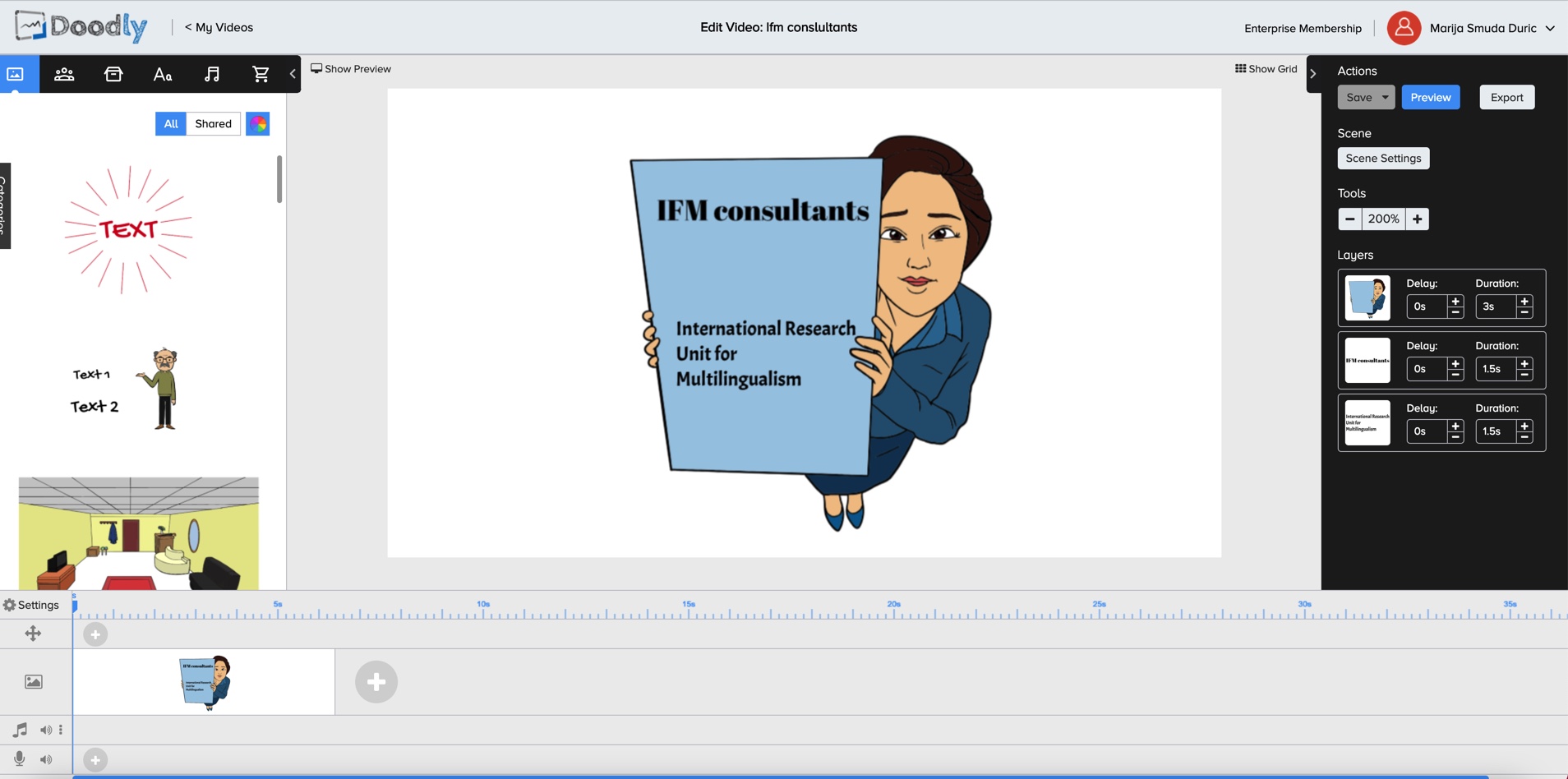Video Nuggets for Language Educators and Parents

Summary
The project addresses a knowledge gap among educators regarding multilingual language development through systematic workshops and online resources (videos) developed. The initiative combines regular in-person professional development sessions featuring interactive elements with accessible educational videos hosted on the International Research Unit for Multilingualism (IFM) website, providing educators with both theoretical foundations and practical strategies for supporting multilingual students.
Responsibilities: Instructional Design, content creation (use cases, videos, visuals), workshop facilitation
Target audience: educators and parents
Tools used: Articulate Rise, PPT, Canva, Camtasia, Doodly
Instructional design method: depends on the requirements
Client: International Research Unit for Multilingualism
Problem Statement
A significant number of educators lack comprehensive understanding of multilingual children's language development patterns and needs. This knowledge gap affects their ability to effectively support students from diverse linguistic backgrounds. The International Research Unit for Multilingualism (IFM) identified that teachers often struggle to differentiate between normal multilingual development and potential language disorders, leading to either delayed interventions or unnecessary concerns. Many educators also report uncertainty about how to foster both German language acquisition while maintaining and valuing the students' home languages.
Solution
To address this critical need, we have implemented a two-pronged approach:
- Recurring Workshops: The organisation conducts regular professional development workshops for educators and parents. Each workshop combines theoretical foundations with practical strategies, covering topics such as typical multilingual development patterns, assessment techniques, and evidence-based teaching methods. Participants engage in case studies, role-playing exercises, and collaborative problem-solving activities to build practical skills they can immediately apply in their classrooms.
- Online Educational Resources-Videos: To extend the impact beyond workshop participants, I created videos that are available on their website. These educational videos provide foundational knowledge about multilingual language development and are freely accessible to all educators. The content ranges from basic introductory material to more specialised topics.
The Process for Preparing Workshops
Research Phase
- Conducting comprehensive literature review on multilingual language development, focusing on:
- Current research in multilingualism
- Evidence-based practices for supporting multilingual learners
- Common misconceptions among educators about language acquisition
- Assessment methods for multilingual children
- Cultural aspects of multilingualism
- Gathering practical insights through:
- Interviews with experienced multilingual education specialists
- Consultations with speech-language pathologists
- Surveys of current teachers about their specific challenges
- Analysis of successful multilingual education programs
Material Development
- Workshop Structure Development
- Creating a logical flow of topics progressing from foundational to advanced concepts
- Planning timing for each activity and discussion segment
- Presentation Materials
- Developing visually engaging presentations incorporating:
- Clear learning objectives for each section
- Real-world examples and case studies
- Visual aids (graphs, charts, infographics)
- Video clips demonstrating key concepts
- Discussion prompts
- Developing visually engaging presentations incorporating:
- Interactive Elements
- Integration of Mentimeter activities:
- Opening ice-breaker questions about participants' experiences
- Real-time polls to gauge understanding
- Word clouds for collecting group insights
- Quick knowledge checks throughout the session
- Final reflection questions
- Integration of Mentimeter activities:
- Hands-on Activities
- Designing role-play scenarios
- Creating small group discussion tasks
- Developing practical exercises for applying concepts
- Preparing case study analysis worksheets
- Resource Package
- Compiling handouts summarising key points
- Creating reference sheets with practical strategies
- Developing classroom observation checklists
- Preparing recommended reading lists
Evaluation
The Process of Video Production

| Pre-Production Phase: | |
| Content Planning |
|
| Script Development |
|
| Production Phase: Doodly Animation Creation | |
| Scene Setup |
|
| Animation Development |
|
| Camtasia Recording and Editing: | |
| Recording |
|
| Editing |
|
| Enhancement |
|
| Post-Production | |
| Quality Review |
|
| Final Steps |
|

Language Development explains how children acquire languages. It describes the phases of language development and some of their characteristics, such as over-regularisation and overgeneralisation.

Power of Multilingualism shows the benefits of speaking more than one language from four different perspectives: workplace, culture, socialisation, and brain development.
Multilingual Development presents some interesting facts about languages (e.g. there are around 7000 languages spoken worldwide), definitions, and different types of bi/multilingual development.
Challenges of Multilingualism shows that speaking more than one language and living in multilingual surrounding is not always easy. A few of my friends shared their struggles and challenges parenting little multilinguals.



